|
15. Parnassius apollo (Linnaeus ,1758) / Apollo / Papilionidae – Parnassiinae
NL: apollovlinder / D: Apollofalter / F: apollon
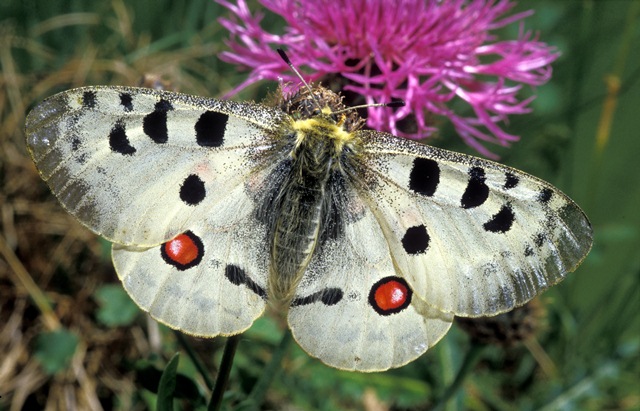 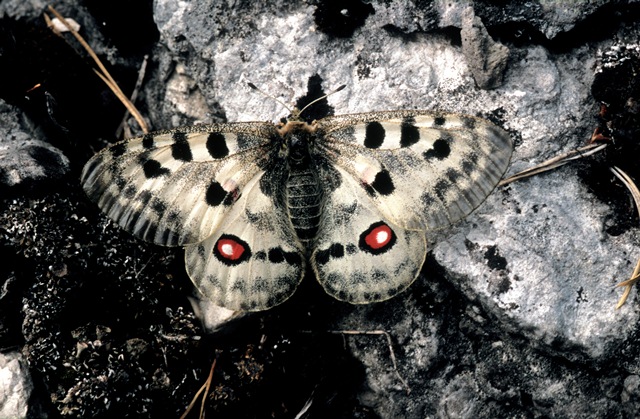 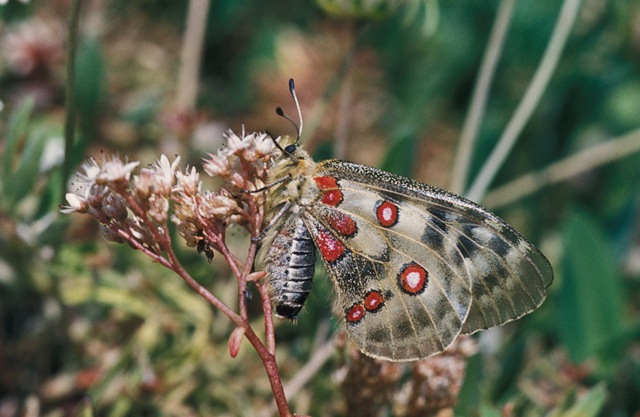
Photographs: Frits Bink ©.
Large or very large, wing length 37 (34-40) mm. The species occurs in the Benelux only as a stray, the nearest population occurs in the valley of the Mosel in Germany near Cochem, about 60 km from the border of the Benelux. Elsewhere in Europe it occurs in boreal, mountainous and alpine climate on stony places with sparse vegetation.
The butterfly is on the wing from mid-June until mid-August, the actual flight period depends on the local altitude. It occurs in continental climate, amplitude 9 to 18, and the required heat sum is 450°d and the maximal tolerated 1200°d. This corresponds with climate windows of 20 weeks and 28 weeks.
This large and attractive butterfly has been the subject of conservation measures over a long period. Nevertheless it has disappeared from many places in Europe.
The Swedish island of Gotland is one of the more pleasant places to observe this butterfly where it is widespread on the hällmark and the costal cliffs.
Ecological characteristics
Behaviour over time
Overwintering: egg with fully developed larva within, egg attached to any object.
Reproduction: oviposition starts after 2-3 days, when the body contains 41 (35-47) eggs. Observed potential production 3.3 times as much.
Larval feeding periods: 10 weeks in the period from end-March until end-June. There may be a long delay when the snow cover persists in spring.
Generations: one.
Spreading of risk: not observed.
Life cycle: egg 37-41 weeks; larva 72 (60-83) days; pupa 21 (14-25) days.
Life span of adult: female short, 2 weeks, male rather longer, 3 weeks.
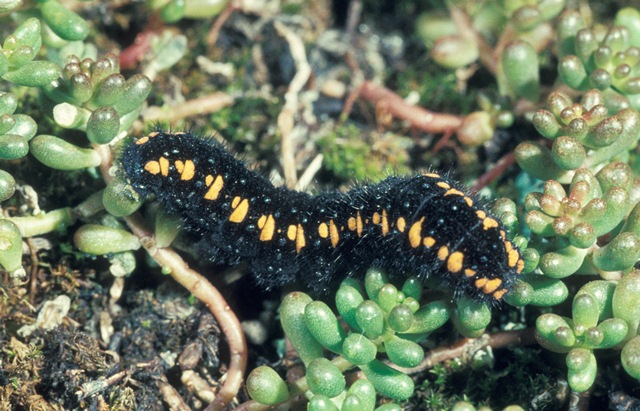 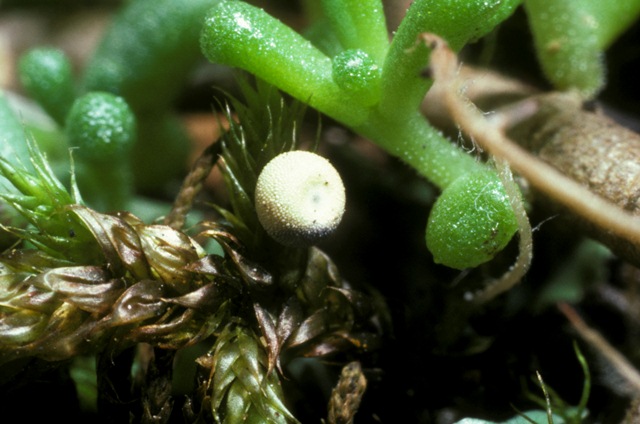
Photographs: Frits Bink ©.
Behaviour in space
From stay-at-home to migrant: stay-at-home, spatial requirement considerable. Initially males are strongly bound to the place of birth but, when growing older, they behave as vagrants. The females have a more nomadic lifestyle.
Finding a mate: the male patrols, flying for many hours in circles over the ground and inspecting every white object that may be a freshly hatched female that can be taken by surprise. The female is plugged by a sphragis during mating.
Orientation in the landscape: open and stony landscape, scree, hällmark, cliff and at some places stonewalls of vineyards.
Oviposition: eggs are laid rather randomly, the female selects open, stony fields where the host plant Sedum album grows.
Defence
Threats from other organisms: the larva is black with bright orange and blue spots, typical predator frightening colours, and armed with an osmeterium.
Threats from the environment: larva and adult are bound to a narrow temperature range. The larva will only survive on stony ground where it can find a place to warm up in the sunshine but at the same time a cool place to escape when it becomes too hot. The adult needs a long time to warm up in the morning and dry the wings wetted by the dew but at the same time cool sites where it can pass the hot afternoons.
Feeding habits
Adult: nectar, all kinds of big flowers e.g. viper’s bugloss but also flowers of its own host plant, white stonecrop.
Larva: can move quickly but is poor climber and often switches from a half-eaten stem to a new stem of its host-plant. The condition of the host plant has an important impact on the survival of the larva.
Larval foodplants
Plant species: Crassulaceae, Sedum album, at some place S. telephium where small plants grow under stress conditions.
Journal
Rearing experiment based on specimen from stock of Ingo Nikusch, Offenburg, Germany:
15 April 1983: received about 50 newly hatched larvae. They had been overwintered as eggs in a fridge.
18 April: larvae congregated on a Sedum album twig in full sunshine.
24 April: 5 larvae in L2.
3 May: mixture of L1 & L3 larvae displayed social behaviour.
15 May: some larvae now in L4.
5 June: biggest larva nearly full grown, hide during night but also during bright sunshine.
15 June: first pupa.
1 July: 10 pupa and 2 larvae.
6 July: first adult appeared, male.
8 July: second one, female.
14 July: third and fourth adult hatched.
Females started egg laying without mating (see table 15.1).
Rearing experiment based on specimen from Sepp Weidemann, Untersiemau, Germany:
13 April 1986: received 10 larvae in first instar.
22 April: larvae moulting.
27 April: all moulted except one.
2 May: three larvae moulted L3 to L4.
8 May: three more larvae moulted, 25 mm in size.
15 May: biggest larvae measured 34 mm in contracted position, 45 mm when extended.
23 May: first pupa.
25 May: four larvae pupated.
29 May: pupae weighed: 908 mg, 914 mg, 997 mg and 1076 mg.
17 June: first adults appeared, two males.
24 June: last one appeared, female.
Table 15-1. Results of dissections

Table 15-2. Collection and observation localities
D, Arnstein 50° 01’ 57”N – 9° 47’ 41”; 22 July 1984.
F, Vallouise 2500 m, 44° 54’ 48”N – 6° 29’ 19”E; 4 September 1992.
S, Gotland, Buttle 57° 25’ 09”N 18° 34’ 38”E; 17 July 1982, 25 June 2004, 6 July 2004, 16 July 2004.
S, Gotland, Grodde 57° 52’ 01”N – 18° 49’ 02”E; 2 July 2004.
S, Gotland, Grogarns 57° 25’ 32”N – 18° 53’ 21”E; 13 July 2004.
S, Gotland, Kappelshamn 57° 55’ 04”N – 18° 45’ 20”E; 30 June 2004.
S, Gotland, Lickershamn 57° 50’ 17”N – 18° 34’ 54”E; 3 July 2004.
S, Gotland, Lickershamn 57° 51’ 05”N – 18° 37’ 46”E; 17 July 2004.
S, Gotland, Ljugarn 57° 22’ 03”N – 18° 41’ 31”E; 16 July 1982, 21 June 2004.
S, Gotland, Maskmyr 56° 56 20”N – 18° 12’ 20”E; 25 June 2004.
S, Gotland, Östergarn 57° 24’ 43”N – 18° 43’ 27“E; 15 July 2004.
S, Gotland, Russväter 57° 23 29”N – 18° 43’ 36”E; 16 July 2004.
S, Gotland, Stygmyr 57° 50’ 10”N – 18° 38’ 32”E; 18 July 2004.
Fig. 15-1. Parnassius apollo, designed phenogram.
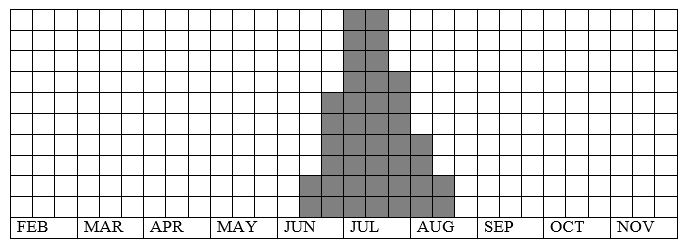
Fig. 15-2. Parnassius apollo, habitat characteristics.
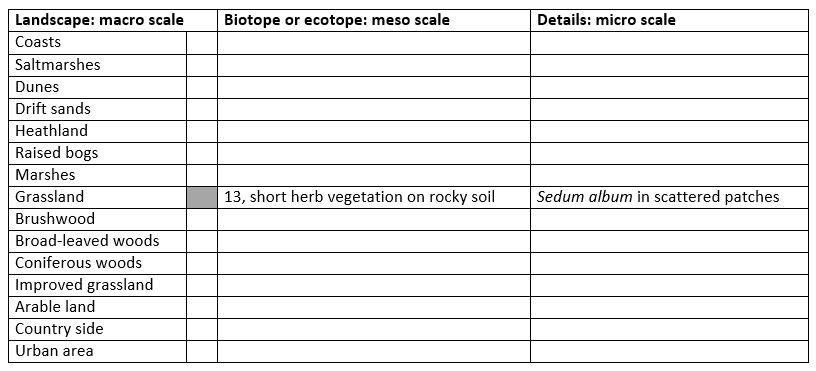
Fig. 15-3. Parnassius apollo, climate matrix, heat-sums 450 - 1200°d.

|










